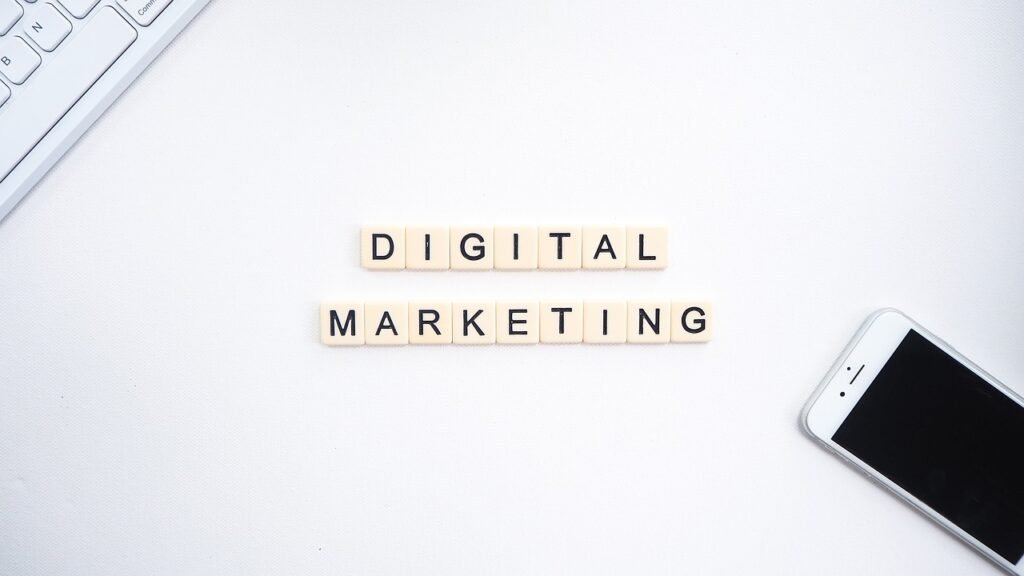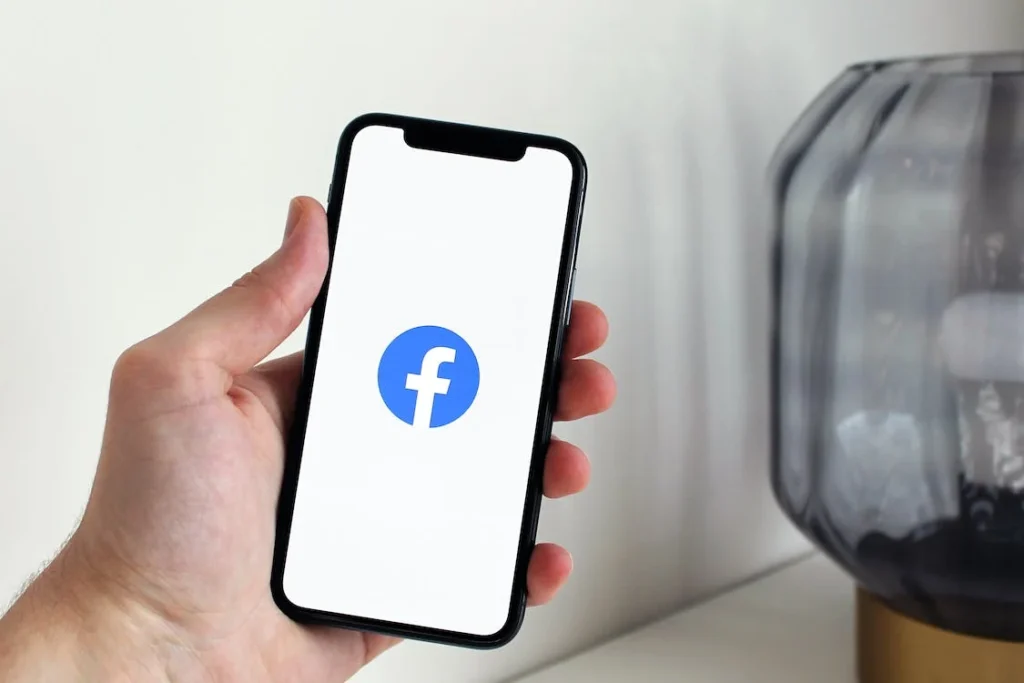Understanding Inbound Marketing
Inbound marketing is like handing out free cookies to folks strolling by your bakery. You invite them in with tasty content and experiences that hit the spot. Forget the old-school hard sell—this is about building trust and starting a conversation.
Why Inbound Marketing Matters
Inbound marketing is my secret weapon in e-commerce. I aim to gently nudge folks from “Hey, who are you?” to “I need more of that in my life!” with solutions that solve their everyday headaches. Unlike classic ads that jump out yelling “Buy me!” while you’re trying to enjoy your lunch, inbound marketing pops up to offer a helping hand, right when they need it most. This approach minimizes those pesky, ineffective marketing spends (Impulse Creative).
The power of inbound is clear when you check out the numbers. When people stumble upon a company in a natural, friendly way, the deal-closing rate is a surprising 14.6%. Compare that to a measly 1.7% for traditional ads, and you see why inbound is the preferred game plan (Impulse Creative).
Why I Love Inbound Marketing Strategies
Getting into inbound marketing has been a game-changer for my online shop. High-quality content not only draws people in, but also makes them feel like they’re in safe hands by dishing out helpful tips and solutions. This boosts site hang-time and cranks up the likelihood of landing that sale (Okwrite).
And let’s not forget those magic words—Calls to Action (CTAs). A well-placed CTA can turn a window-shopper into a checkout line regular. These CTAs boost chances folks will stop window-shopping and start buying (Okwrite).
Here’s why inbound marketing’s got me hooked:
| What’s Great | Why It Rocks |
|---|---|
| Better Chances to Seal the Deal | Inbound wins big with a 14.6% close rate, leaving old-school marketing in the dust with just 1.7%. |
| Say Goodbye to Wasted Time | Create content that resonates with what folks need, sidestepping the awkwardness of unasked-for ads. |
| Keep ‘Em Around with Good Stuff | Trust-building content keeps customers around, upping the odds they’ll buy. |
| CTAs That Seal the Deal | Crafty CTAs push folks to go from lookers to buyers without missing a beat. |
Jumping into inbound marketing not just attracts new folks but keeps them sticking around, which is crucial for boosting sales and growing my business. For more nuggets of wisdom, check out inbound marketing examples or learn about other inbound marketing strategies.
Elements of Successful Inbound Marketing
Building a winning inbound marketing plan means knowing what really makes folks tick so they stick around and hit that “buy now” button. We have two heavy-hitting elements here: chipper calls to action and content that doesn’t just fill space but really speaks to your audience.
Crafting Strong Calls to Action
Got a snazzy call to action (CTA)? Great, because that’s your bread and butter for turning browsers into buyers. Those CTAs aren’t just window dressing; they’re nudges that push potential customers just a bit, and have them bringing out their credit cards. An effective CTA’s gotta pop—be clear, convincing, and tie snugly into whatever tale your content’s spinning.
| CTA Ingredients | What It Means |
|---|---|
| Action-Packed Words | Verbs like “Get,” “Grab,” or “Jump In” just get folks moving. |
| Make It Pop | A CTA should be hard to miss; jazz it up with bright buttons or bold letters. |
| Tick-Tock | Urgency like “Only Today!” nudges them into swift action. |
| Keep It Honest | The CTA should make sense with what you’ve just chatted about—it’s a trust thing. |
When CTAs are done right, they flip that “no thanks” to a “heck yes!” Integrate these little charmers any which way: buttons, pop-ups, or text links—whatever grabs attention and gets folks clicking.
Leveraging Quality Content
Content is your MVP in sales land if it pulls in readers and keeps them coming back for more (Okwrite). It’s all about crafting pieces that speak to your audience’s needs, guide them effortlessly through decision-making, and keep them clicking for more.
A well-tuned content strategy isn’t just noise—it’s your brand making a meaningful connection. Companies diving deep into content see conversions skyrocket, nearly 6 times more than those still sitting on the sidelines (Redline Digital). Some things to keep on your radar:
- Stay Interesting: People love fresh and good stuff. Keeping it snappy and useful encourages sharing, which gets more eyes on your brand.
- Boost Your SEO: Great content doesn’t only speak to readers but also screams “look at me” to search engines. Pages sitting pretty at the top of Google often have stacks of backlinks (Redline Digital). Becoming a trustworthy name pushes readers from search results to your front door.
- Trustworthiness: Consistent, top-notch information sets you up as an industry whiz, making customers comfortable enough to trust you with their business.
When you nail these parts—stand-out CTAs and content that actually offers something—you’ll see your inbound marketing efforts go from “meh” to money-spinners. Check our inbound marketing examples for a deeper dive into what makes a killer strategy.
Implementing Inbound Marketing for E-commerce
Inbound marketing can really kickstart e-commerce growth. By lining up content and plans with what my potential buyers need, I can create a shopping journey that pulls them in and keeps them coming back.
Custom Content for E-commerce
Getting content that clicks with my audience is a biggie. Blogs that stand out in e-commerce spill the beans on useful info and know-how, building trust and keeping the brand front and center. Every post should make it a no-brainer to shop, with eye-catching product pics and direct lines to the good stuff (BigCommerce).
To whip up content that’s spot-on for e-commerce, here’s my playbook:
| Thingamajig | Whatcha Get |
|---|---|
| Slick Layouts | Grab eyeballs with good-lookin’ promos and product displays. |
| Email Buzz | Ping out tailored messages to reel in shoppers. |
| Solid Info | Pop out articles that tackle customers’ headaches. |
| Social Heatin’ Up | Share cool stuff and chit-chat with followers. |
| Multi-Platform Mingling | Spread the word across various spots to nab a broad audience. |
| On-the-Go Marketing | Ensure scrolling’s a breeze for mobile shoppers. |
| SEO Boost | Spruce up content for search engines so folks can find me. |
By adding these bits and bobs into my play, I make sure my stuff hits home, leading to more eyes, more buyers, and more sales (Logic Inbound).
Pushing Sales with Inbound Marketing
Inbound marketing is like a secret weapon for nudging sales upwards. By firing up campaigns that spotlight goodies and dish out special offers, I can snatch potential buyers when they’re about to say “I’m in!”
Chewing over strategies, here’s what I do:
- Product-Spotlight Blogs: Write up guides that spell out product perks, uses, and so on to funnel folks right to the buy button.
- Nudge Again Campaigns: Go after folks who window-shopped but didn’t buy with ads of stuff they peeped at to seal the deal.
- Email Follow-Ups: Tap potential buyers with one-on-one emails about products they eyeballed for a nice bump in sales.
By weaving these inbound marketing tactics into my grand scheme, my e-commerce game steps up to a whole new level. The way content, chatting with the crowd, and sales tricks mesh is the backbone of my approach, aiming everything toward boosting buys and keeping customers jazzed about coming back for more.
Maximizing Visibility Through SEO
Importance of SEO for E-commerce
When you’re in the game of selling stuff online, Search Engine Optimization (SEO) is a pretty big deal. I’ve learned that SEO isn’t just about getting seen; it’s about actually bringing folks to your virtual doorstep. Turns out, 61% of B2B marketing folks agree that SEO and organic traffic reel in more leads than any of their marketing tricks. Don’t just take my word for it, check out this info from the Weidert Group.
SEO does more than just hang out in the digital space though. It puts a booster on your advertising gains, both online and in the real world. When your site pops up in searches, you’re basically handing out a megaphone to shout out to potential customers. That way, you can hit those revenue goals a whole lot easier, like this Transistor Digital piece says.
| SEO Benefit | Description |
|---|---|
| Increases Organic Traffic | Better search rankings bring in more eyeballs and foot traffic. |
| Enhances Lead Generation | SEO outdoes other marketing in bringing in the leads. |
| Boosts Advertising ROI | Makes your paid advertising more effective by expanding organic reach. |
Enhancing E-commerce SEO Strategies
Getting your SEO to work right in e-commerce is all about hitting the right notes. First off, you’ve got to blend SEO with content like peanut butter and jelly. This means nailing those keywords and topics so your stuff isn’t hiding in a dark corner of the internet. Here’s a good read on that.
You can’t forget the magic of backlinks either. As it turns out, Google’s top dog usually has about 3.8 times as many backlinks compared to the underdogs down the list. So getting high-quality links to your site is as good as rolling out the red carpet. A woppin’ 73% of SEO experts swear by these links as a sign of trust and relevance, just ask Redline Digital.
Here’s a rundown of some top-notch SEO moves for e-commerce:
| SEO Strategy | Description |
|---|---|
| Keyword Optimization | Sniff out and sprinkle the right keywords all over your product descriptions and articles. |
| Content Marketing | Pop out content that solves folks’ problems and is SEO-laden. |
| Link Building | Fetch some high-quality backlinks to push your site up the search chart. |
| Technical SEO | Keep your website in tip-top shape, making sure it loads quick and looks great on mobile. |
By sharpening these SEO tools, I’ve not just pulled in more curious customers, but really got them sticking around. That’s the secret sauce for e-commerce success right there. For more juicy stuff, swing by our pieces on inbound marketing strategies and inbound marketing analytics.
Social Media Integration
Social media is like that magical ingredient that spices up inbound marketing for e-commerce. By hopping onto these platforms, I can chat it up with potential customers, show off my brand, and get folks clicking their way to my online store.
Social Media for E-commerce
Jumping into the social media pool lets e-commerce folks better catch the eye of their crowd. According to Logic Inbound, a solid e-commerce setup is key to getting noticed and boosting sales. By regularly sharing cool stuff, I can build trust and keep my audience coming back for more.
Picking the right platform is like picking the right outfit for a party—gotta match it up with who’s going to be there. Instagram and Pinterest are perfect for showing off with snazzy pics. Facebook’s got all the ad tools you could want, and LinkedIn is the spot for those B2B connections.
Here’s a quick rundown of social media hangouts for e-commerce:
| Platform | Perfect Fit | Sweet Features |
|---|---|---|
| Flashy product displays | Stories, Shoppable Posts | |
| Community vibes and ads | Advertising, Groups | |
| Finding ideas and products | Pins, Idea Pins | |
| B2B networking | Industry insights, Articles |
Keeping up with a consistent post calendar for stuff like new product alerts, promos, and customer chats is the way to go. Tossing website links into social posts keeps traffic flowing and cranks up conversions.
Influencer Marketing Strategies
Adding influencer marketing to my social media plan can really beef up how far my brand gets seen and how much folks trust it. Pairing up with influencers who vibe with my audience means my stuff gets a real-deal cosign. These influencers are already tight with their peeps, and their nod can boost exposure big time.
When I’m looking for influencers to team up with, I eyeball their focus area, who’s watching them, and how much those followers interact. Micro-influencers might have a smaller crew, but they usually get more nods and fit well with niche markets.
Here’s the game plan for teaming up with influencers:
| Step | What’s Up |
|---|---|
| Identify Influencers | Pick influencers who fit with the brand |
| Set Objectives | Lay down goals (boost sales, get known) |
| Collaborate | Cook up content together (posts, stories, vids) |
| Monitor Results | Watch engagement and sales from the campaign |
Building relationships with influencers does more than push my products—it dishes out social proof, tempting potential customers to buy. These influencer steps are key in rocking an awesome inbound marketing strategy. For more tips and tricks, take a look at our inbound marketing examples.
Case Studies in Inbound Marketing Success
Success Stories from E-commerce
You wouldn’t believe the magic inbound marketing has worked for e-commerce businesses. Some brands practically danced their way to success. Take Suzuki South Africa, for instance. They decided to give inbound marketing a shot in 2016, just as the economy was shaking a bit. The result? They boosted their sales by 21% and snatched extra market share, jumping from 1.53% to 2.17%. Talk about timing!
And then there was TUI Travel, who saw their monthly site visitors shoot up by somewhere between 20% and 50% just by sneaking into new inbound marketing channels. Clearly, curiosity for new routes paid off. They also saw sales opportunities jump up 20%, and their revenue from student travel products took off with a sky-high increase of 106%. All this in just one year!
Next up is Talent Clue, which tackled the Spanish market back in 2013. They worked wonders with inbound marketing and HubSpot, scoring a 194% increase in leads and a staggering 291% rise in revenue. Meanwhile, over at Shopify, they fine-tuned their contact and email management using HubSpot’s tools, resulting in smooth inbound marketing that even a CEO couldn’t ignore.
| Company | Sales/Traffic/Leads Boost | Year Done |
|---|---|---|
| Suzuki South Africa | Sales up by 21% | 2016 |
| TUI Travel | Traffic up 20-50%, sales up 20%, revenue up 106% | 1 year |
| Talent Clue | Leads up by 194%, revenue up by 291% | 2013 |
| Shopify | Better email management leads to awesome marketing | N/A |
Lessons Learned from E-commerce Brands
Running through these success stories, a couple of things hit me hard about inbound marketing. First, if you want to see numbers that’ll get your board applauding, dive into inbound marketing. It works even when the economy’s on a roller coaster ride. Just ask Suzuki South Africa. They didn’t let a tight budget cramp their style.
Another eye-opener was how necessary it is to mix up your marketing channels. TUI Travel showed how spreading out your inbound bets can have a massive impact on sales and lead attention. You can never overemphasize this.
And, let’s face it, having the right tools is like finding gold. Talent Clue used HubSpot not just for the sake of it, but to actually make their strategies count, thus showing why automation tools can help you work less and earn more. And don’t forget Shopify – they schooled us on the importance of managing customer relationships to nudge those conversion rates skyward.
These stories stand as proof that inbound marketing is like jet fuel for e-commerce brands. If you’re eager for more wisdom, you might want to peek at our pages on inbound marketing strategies and inbound marketing examples.
E-commerce Marketing Strategies
Nailing e-commerce marketing is like hitting the jackpot online. When done right, it boosts your web traffic, hooks new customers, and rings up those sales. Let’s chat about how solid marketing moves are your best bet in the dog-eat-dog online world.
Key Components of E-commerce Strategy
A killer e-commerce strategy doesn’t just pop up overnight. It’s like making a pizza — every topping counts. Here’s a rundown of the big slices you need:
| Component | Description |
|---|---|
| SEO | Think of Search Engine Optimization as your VIP pass. It gets your site noticed by the folks who actually matter by spicing up your content and tightening your website (Logic Inbound) |
| Quality Content | Engaging reads like blogs or snazzy product descriptions are the pixie dust that makes customers stick around and trust your brand (BigCommerce) |
| Social Media Marketing | Social media’s like your megaphone; shout out your products to the masses. |
| Email Campaigns | Slide into their inbox with personalized promos and handy info—it’s like the nudge they didn’t know they needed. |
| Analytics | Keeping tabs on what works and what flops will help tweak your game plan for better results. |
Juggling these bits will craft a user-friendly experience that makes customers feel right at home with your brand.
Mobile Marketing Essentials
With everyone glued to their phones for shopping, not having a mobile game plan just isn’t an option anymore. Research shows everyone’s switching to mobile quicker than you can say “add to cart” (Logic Inbound). Here’s the 411 on what makes mobile marketing tick:
| Mobile Marketing Element | Key Considerations |
|---|---|
| Mobile Optimization | Make sure your site runs smoother on phones than a greased weasel. No pinching or zooming needed. |
| App Development | A nifty app keeps your customers coming back with personalized vibes and easy access. |
| Location-Based Marketing | Tap into GPS magic to send deals and updates relevant to their whereabouts. |
| User-Friendly Interfaces | Design shopping flows that even your grandma could navigate—quick checkouts, easy mobile pay. |
Focusing on mobile isn’t just smart; it’s essential to tap into that on-the-go crowd who shop from their phones. Doing so means better conversion rates and happier customers. Mixing these strategies with a solid inbound marketing approach will set up your business for ongoing success in the wild world of e-commerce.
Comparing Inbound vs. Traditional Marketing
I’ve been diving into the vast ocean of marketing strategies, and I’m here to share my thoughts about the tussle between inbound marketing and the old-school, traditional marketing approach. Knowing these differences isn’t just trivia—it’s the secret sauce for business folks aiming to nail their marketing game.
Differentiating Inbound and Traditional Marketing
Inbound marketing is like that friendly neighborhood hangout—it draws people in by offering juicy content, helping them make informed decisions. It’s all about creating stuff like helpful blogs, lively social media chats, and workshops full of good info that hit home with folks interested in what you’ve got. On the flip side, traditional marketing is like shouting from the rooftops, trying to grab everyone’s attention with things like ads, random phone calls, and stuffed mailboxes.
| Feature | Inbound Marketing | Traditional Marketing |
|---|---|---|
| Focus | All about the reader, making friends | Get that sale, reach everyone |
| Approach | Content magic, building connections | Shouting out, brand reminders |
| Data Usage | Smart choices, fancy stats | Old-school research |
| Engagement | Two-way chats with cool content | Yelling from a soapbox |
Inbound marketing is super into getting what makes potential customers tick at every twist and turn. Traditional marketing, meanwhile, loves to blast a one-size-fits-all vibe, banking on folks remembering brands after being nudged repeatedly.
Benefits of Inbound Marketing Approach
I’ve seen firsthand how inbound marketing ain’t just a passing trend—it’s got some solid perks. It ramps up your game by not only catching but keeping people’s attention and making those leads feel right at home. Here’s what I’ve picked up:
Easy on the Wallet: Inbound marketing usually saves you a pretty penny, costing about 62% less per lead than going the traditional route LinkedIn.
Getting Real with the Audience: It’s like having a radar for those who actually care about what you’re selling.
Keeping Leads Warm: Builds the whole strategy around understanding folks’ buying patterns, customizing content to hold hands with leads across their journey, creating friendships that last.
Boosting Brand Street Cred: Pumping out top-notch content makes your brand the go-to guru in your industry, earning you a trusty badge from potential folks out there LinkedIn.
Pouring energy into inbound marketing for ecommerce was like upgrading to turbo mode in connecting with my customers while making my campaigns hit the bullseye. If you’re curious about flipping your own strategy, snooping around inbound marketing strategies and peeping examples inbound marketing examples might just light your path.





















